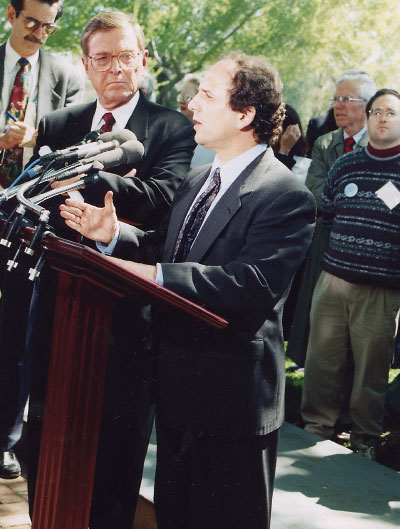Health insurance in America began nearly 80 years ago. From the very beginning, and as employer-based health insurance expanded over time, mental health care was subjected to “inside limits” or discriminatory coverage in nearly all health insurance in the private sector. These limits included higher deductibles and copayments for mental health care compared with other medical illnesses. Also, there were limits on hospitalization days and lifetime limits different from those for general medical conditions, such as cancer and heart disease. Medicare and Medicaid in the mid-1960s continued and confirmed these limits with discriminatory coverage for treatment of mental disorders.
It has taken 45 years to achieve more fairness in insurance coverage for the treatment of mental and substance use disorders. The first step took place when President John F. Kennedy directed the Civil Service Commission to provide parity coverage in the federal employees insurance program in the 1960s. Since that time, there has been some major progress toward the goal of true nondiscriminatory coverage, but much work remains to be done.
APA provided leadership in this area as part of a coalition of mental health professionals and consumer groups over the last four decades. In the 1970s Melvin Sabshin, M.D., APA’s medical director, hired Jay Cutler, J.D., as director of government relations, and for many years he was a legendary lobbyist for APA and American psychiatry. His work initially led to improving Medicare’s limited outpatient mental health benefit, lifting a $250 cap in the 1980s.
The first mental health parity bill was introduced in 1992 and enacted four years later. This law mandated parity insurance coverage between mental and other medical disorders in lifetime and annual dollar limits. This law paved the way for many states to enact their own more generous parity laws. Congressional support for parity was led by two senators, Paul Wellstone, a liberal Democrat from Minnesota, and Pete Domenici, a conservative Republican from New Mexico, both of whom personally knew the devastating impact, financial as well as emotional, on families with a mentally ill relative. This was a true and stellar example of bipartisan leadership. Wellstone died tragically in 2002 in a plane crash, but his efforts were memorialized with passage of the Paul Wellstone and Pete Domenici Mental Parity and Addiction Equity Act of 2008 (MHPAEA), which prohibited less favorable benefit limitations for mental/substance use treatment than on medical/surgical benefits.
Patrick Kennedy, a congressman from Rhode Island, picked up the mantle for Sen. Wellstone at that time and into the future. James Scully, M.D., APA medical director, and Nick Myers, director of government relations, led the effort that expanded the 1996 law in 2008. MHPAEA, however, applied only to larger employers—that is, employers with 50 or more workers that offered behavioral health coverage; coverage for these conditions was not required.
The enactment of the Affordable Care Act in 2010 established an “essential health benefit” for health insurance that included nondiscriminatory mental health and substance use services, effectively creating a national coverage mandate. It extended MHPAEA’s provisions to individual and small group insurance markets and to the Medicaid expansion population. When the full impact of these provisions went into effect in 2014, there was an immediate impact on hospitals and programs across the country. At Sheppard Pratt, a nonprofit health system in Maryland that I directed for over a quarter century, the uncompensated care burden was reduced by 50%. Those new dollars were used to expand outpatient and other services in the community to the benefit of many Marylanders.
Regulations on MHPAEA were not issued for several more years, and the fight for fairly implementing these rules goes on. The cost-sharing differences and limits on number of covered visits and days that were so prevalent for decades have been largely, although not completely, eliminated. Problems have continued with the regulation of care management to make it compliant with parity requirements. Provisions pertaining to such management, called nonquantitative treatment limits, require that utilization review, prior authorization, and provider network structures are similar for mental and substance use disorders as other areas of medical care.
Defining the concepts of “medical necessity” is another area where there is continued struggle. The end result is that many health plans continue to discriminate using care management and try to avoid covering people with mental and substance use disorders that are costly to cover and more likely to persist over time. APA CEO and Medical Director Saul Levin, M.D., M.P.A., and APA members Howard Goldman, M.D., and Henry Harbin, M.D., continue to lead the fight for true nondiscriminatory insurance coverage.
It has taken a long time to see progress in achieving nondiscriminatory coverage and reimbursement. APA has been a key player in this effort, and the effort continues. ■



